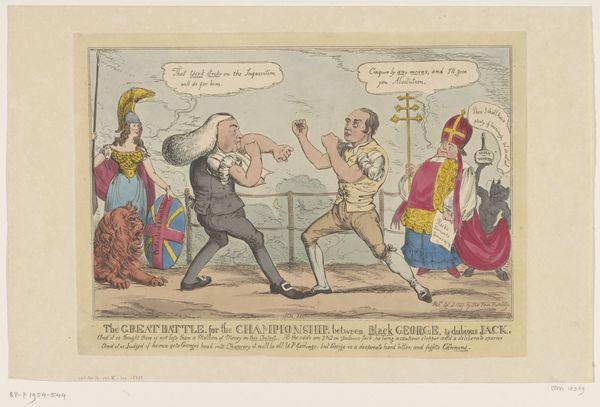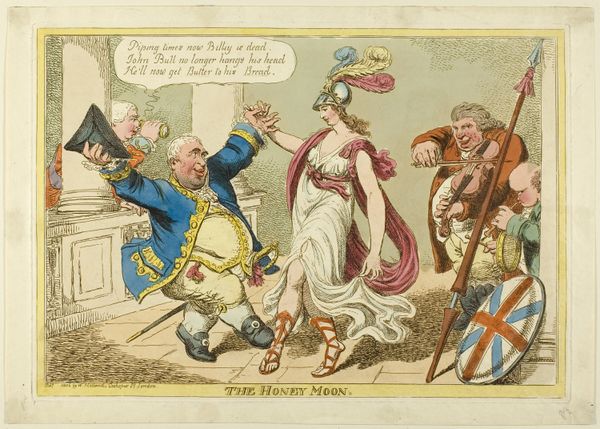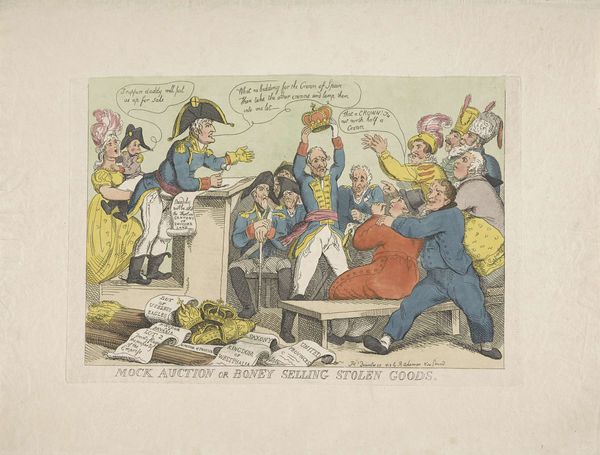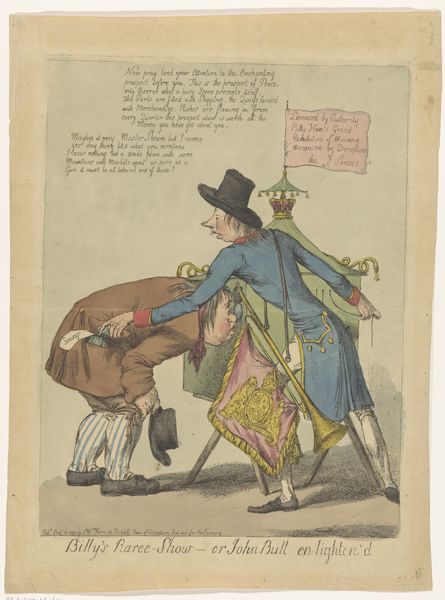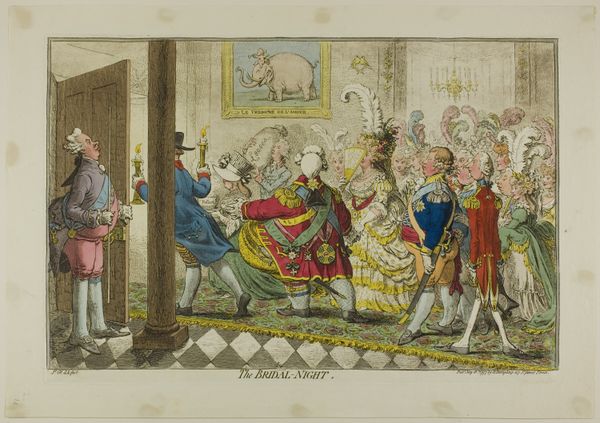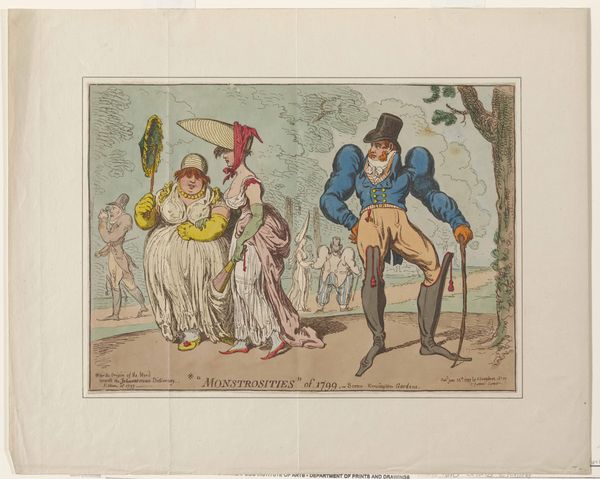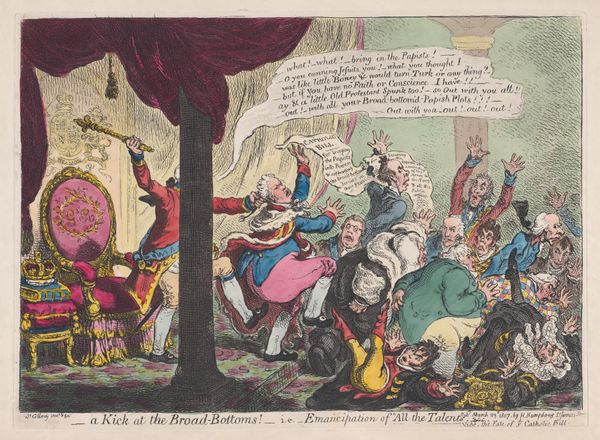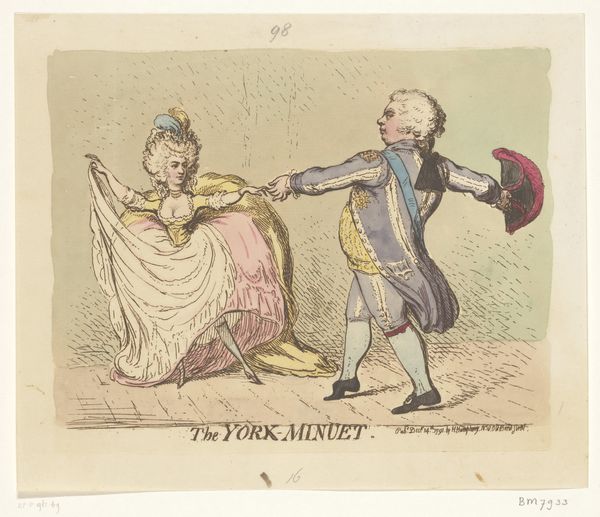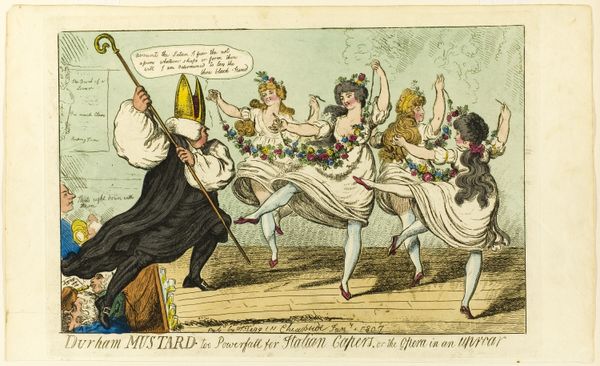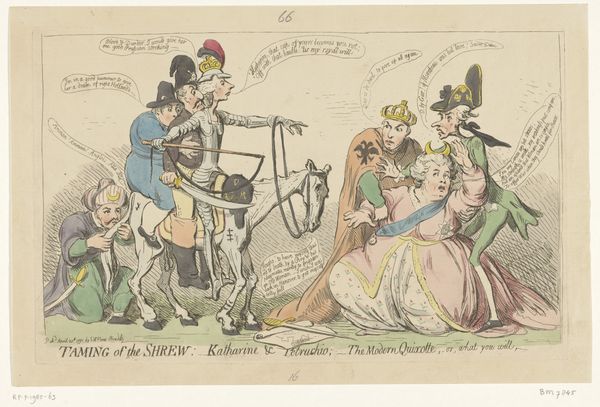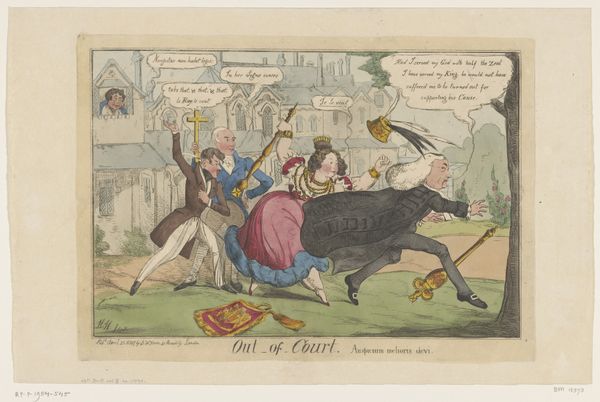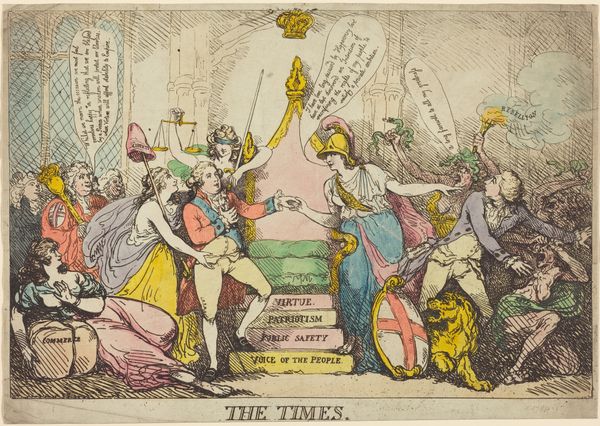
print, watercolor
# print
#
caricature
#
traditional media
#
cartoon sketch
#
figuration
#
watercolor
#
romanticism
#
line
#
watercolour illustration
#
history-painting
#
cartoon style
Dimensions: height 248 mm, width 350 mm
Copyright: Rijks Museum: Open Domain
Curator: Here we have "Spotprent op Catherina II, 1792," possibly created in that year, by Isaac Cruikshank. It’s a watercolor print held in the Rijksmuseum. My first thought: a whirlwind of political turmoil rendered in lively color! Editor: The eye is immediately drawn to Catherine, depicted mid-stride with an almost cartoonish aggression. Notice the blunted scepter in her grip and her high-heeled shoes – what can you tell us about these objects? Curator: These caricatures served as potent political commentary in their time. Catherine II, Empress of Russia, dominates the scene. Cruikshank’s use of clothing, gesture and symbolism underscores Catherine's aggressive foreign policy, likely focused on her military campaigns and expansionist ambitions. Editor: Look at the poor figures being overtaken by the central figure. The crown on the floor in the lower-left – along with the text there – seem quite revealing. And do you have some insights as to why the artist made her hair such a pronounced presence in the overall artwork? Curator: This cartoon participates in a long tradition of satirizing powerful figures, but specifically Russian autocracy. The hair is probably emphasizing excessiveness, lack of control and vanity; the artist here uses clothing as the vehicle for cultural commentary. What does Catherine’s subjugated figure symbolize? Editor: The duke seems representative of instability and fear – look at his raised hands! He's fleeing not just Catherine, but what she represents: the collapse of tradition. He may be fearful, but this portrayal carries a psychological weight far beyond its historical moment. Curator: The artwork definitely places power in question during times of upheaval; we could imagine how viewers might experience an aesthetic like this in modern-day terms. This satire allowed people to publicly critique rulers while perhaps somewhat insulated by humor, thus performing a crucial public role in shaping perception. Editor: I’ll remember how those oversized hairstyles from Cruikshank connect with anxieties that stretch beyond 1792. Thanks for sharing your insights on how it engages the audience in the present day!
Comments
No comments
Be the first to comment and join the conversation on the ultimate creative platform.
